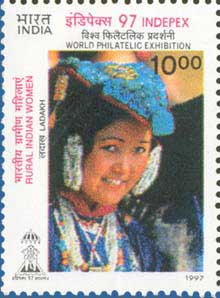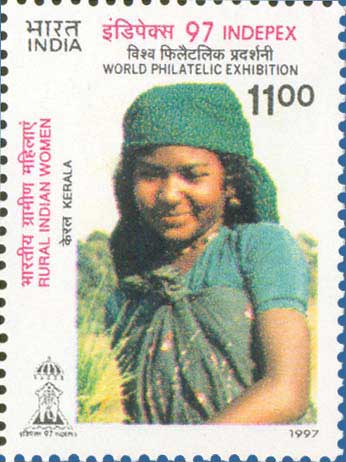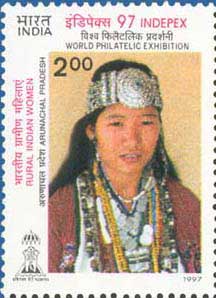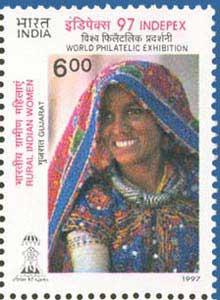|
|
Rural Women on Indian Stamps
Varied as they are in their attire, jewellery and vocations, the Indian Rural Women depict the cross-cultural traditions and values and they symbolise the exalted place women have continued to occupy in the traditional societies of India. The unity in diversity that the Indian Society boasts of can be seen vividly in the depiction of Indian Rural Women. The rural women depicted in these stamps are drawn from the north, south, east and west of India. The golden thread of Indian unity of culture and tradition is discernible in the rich diversity of dress, jewellery and ethnic purity of rural India, as depicted in:
The traditional headgear of the Rural Women of Ladakh studded with semiprecious stones is unique in its, typical craftsmanship. The women are hardy, generally engaged in household work & rearing of cattle.
Rural Women of Kerala boasting a high degree of literacy are tradition bound and they are engaged in the household work, agricultural operations, cottage industries and handicrafts. The stamp depicts a Kerala rural woman working in the paddy fields.
Rural Women of Arunachal Pradesh depict the rich ethnic culture of the North East. The rich and varied dress and jewellery are symbolic of the cultural traditions of that area.
The western region is represented by Gujarat. The colourful attire and jewellery are traditionally typical.
Date of Issue : 15.10.1997 |
||||||||||||||||||||||||||||||||||||||||||||||||||||||



